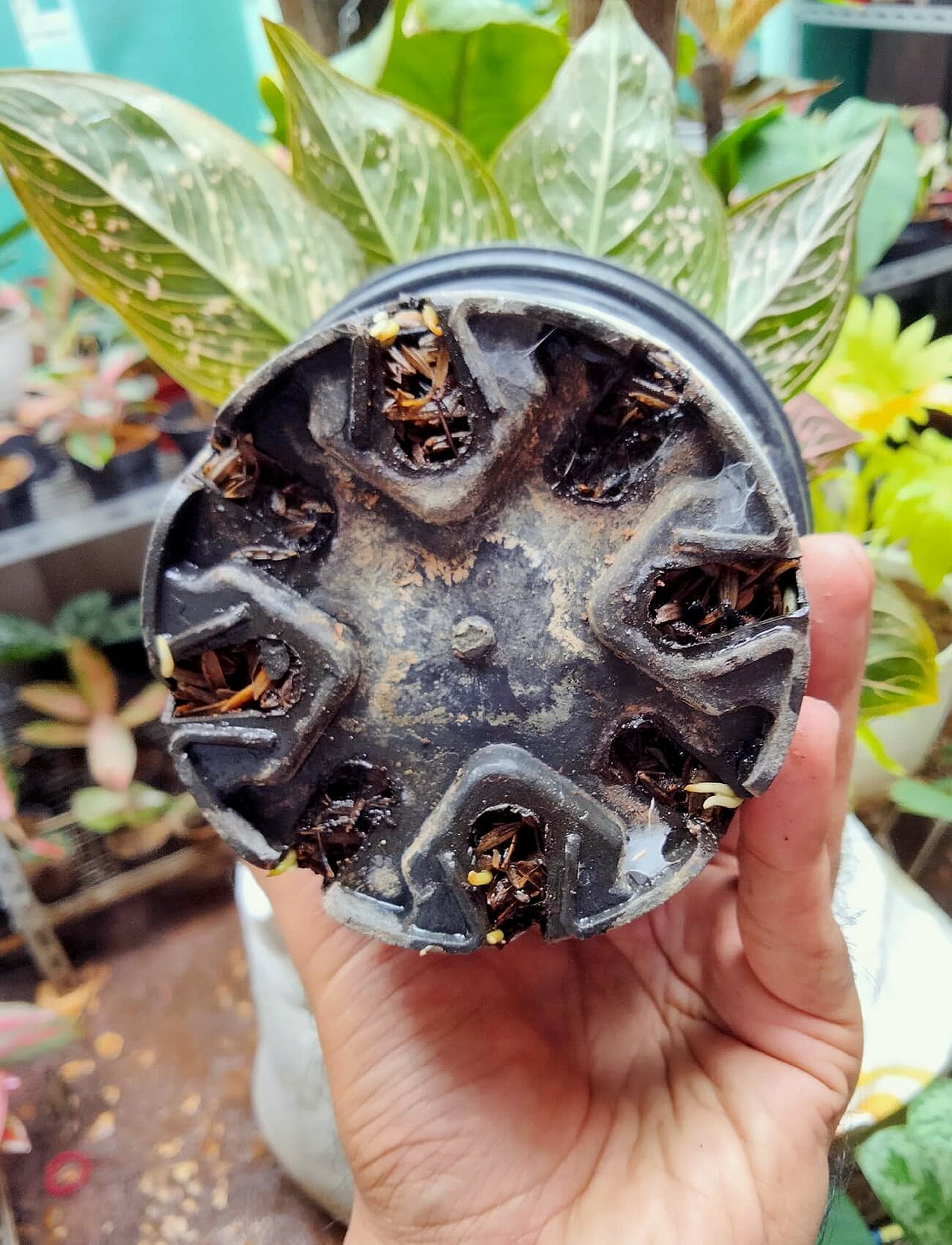Hello steemit friends! This is my first post in the #Steem-BRU community. At first I saw and tried to understand the contents of the post from a beautiful Russian woman named @knopka145. Then I became inspired because my hobby is growing flowers and finally I tried to write about this contest. On this occasion I will talk about plants that are important to my family, namely Aglaonema plants.
For friends who want to know this contest, please read and click this Link
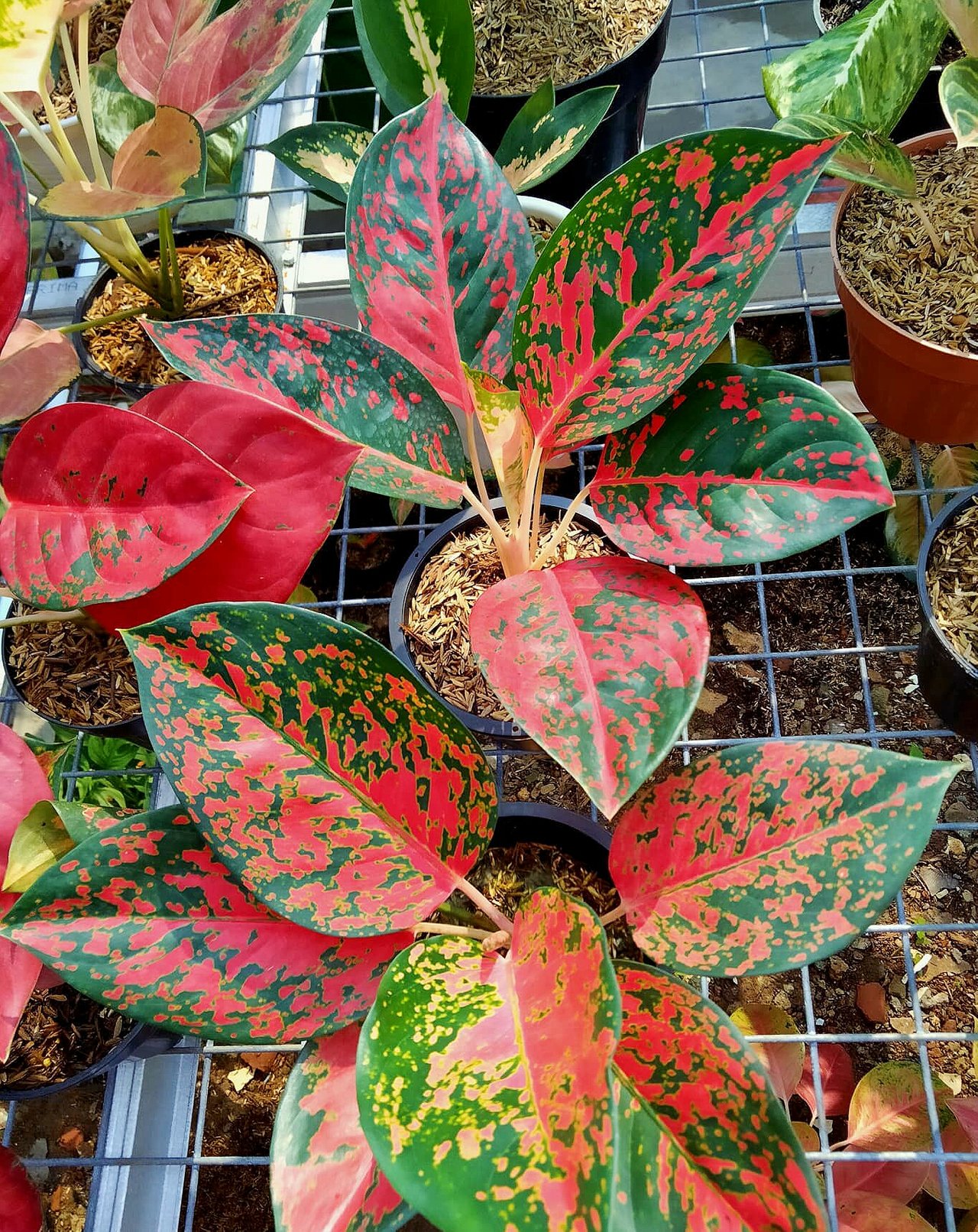
Original photo aglaonema by @hidayat96
The name aglaonema (Aglaonema sp) comes from the Greek, aglaos and nema. Aglaos itself means light, while Nema means thread (stamen). Thus, aglaonema can be interpreted as "stamens that shine brightly". This plant is thought to have come from countries in Southeast Asia or South Asia. In its natural habitat, this plant is often found in lowland forests and in the foothills of mountains in temperate climates.
| Kingdom | Plantae |
|---|---|
| Division | Magnoliophyta |
| Class | Liliopsida |
| Subclass | Base Monocots |
| Order | Alismatales |
| Family | Araceae |
| Subfamily | Aroideae |
| Genus | Aglaonemateae |
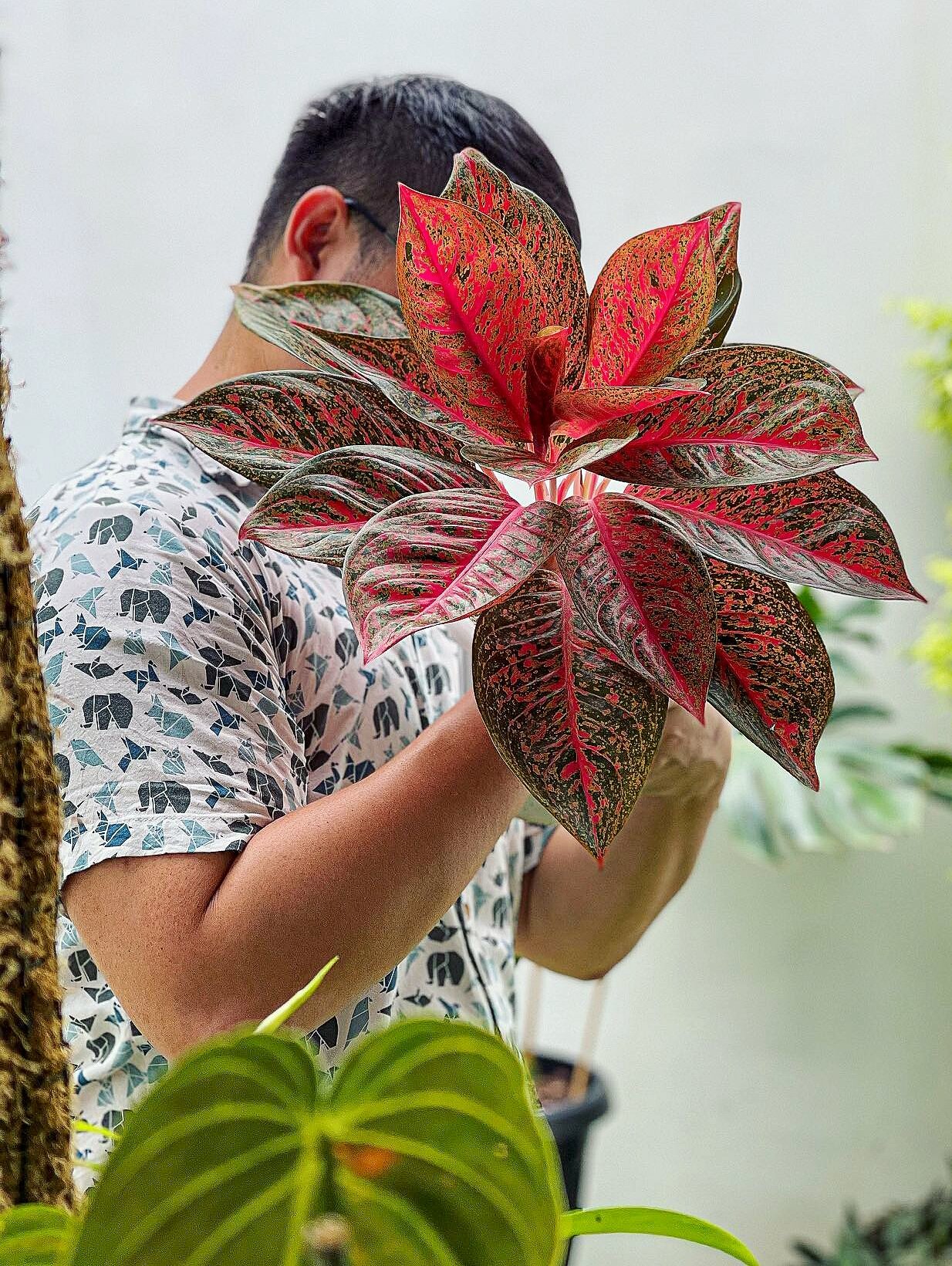
Original photo aglaonema by @hidayat96
In Indonesia, aglaonema is known as "Sri sustenance" or "plant that brings luck". The name was given because some Indonesians think this plant can bring fortune or luck to its owner. Chinese evergreen is the nickname for aglaonema pinned by the Chinese, as the first to cultivate this beautiful leafy plant. In Thailand, aglaonema is nicknamed Siemese rainbow or rainbow from Thailand.
At first, aglaonema leaves only have green and white green color. A plant breeder from Bogor, Greg Hambali who succeeded in creating this cross is called Pride of Sumatra. This cross was produced in 1980 and only released in 1988. Since the appearance of this red aglaonema, many plant enthusiasts have started to hunt it down to serve as a collection of ornamental plants. As a result, the price of Aglaonema skyrocketed sharply. If initially one pot of aglaonema was only valued at tens of thousands, since then the price has reached millions of rupiah for just one leaf. Aglaonema has become a lucrative business area.
Seeing this very favorable situation, in addition to hunting aglaonema as a collection, many fans of ornamental plants have started cultivating and trying to cross aglaonema to get new varieties. Currently, in addition to the original Indonesian aglaonema, the result of crossing local breeders, the Thai aglaonema is the one that has flooded the ornamental plant market in Indonesia the most. The country of the White Elephant is indeed very famous for having many great aglaonema breeders, until several popular aglaonema names from Thailand were born such as chochin, legacy, slam aurora and lipstick. Although the aglaonema market is dominated by products from Thailand, the aglaonema crosses by Indonesian children such as tiara, diana and hot lady are no less beautiful.
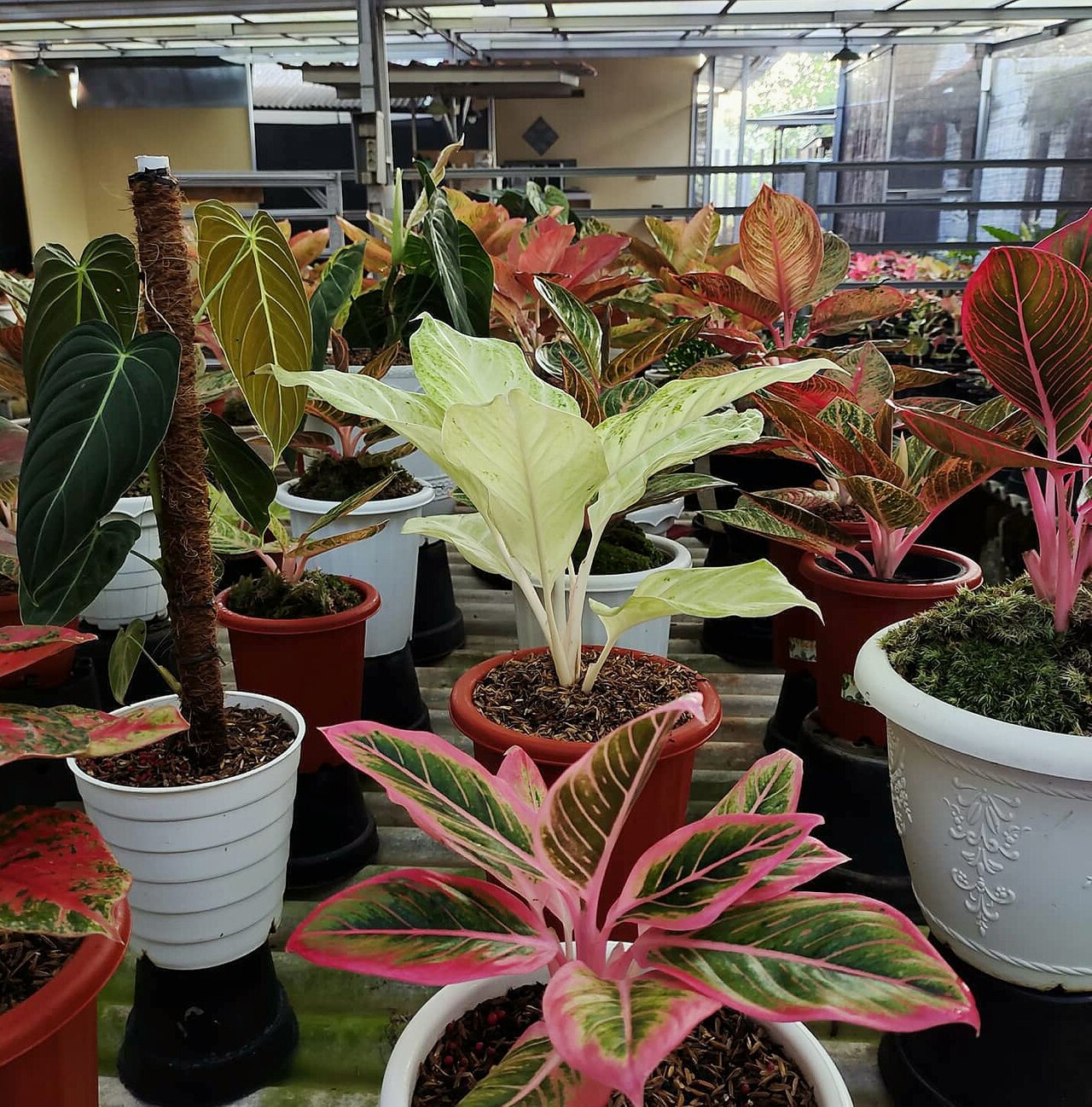
Types of aglaonema plants that are in my garden.
Leaves are the main attraction of aglaonema. Aglaonema leaf shape has many varieties. Some are round (oval), lanceolate, resembling a heart shape, elliptical, and some are even long. The color of the leaves also varies. There are dark red, pink, green, dark green, yellow and orange. The colors of the leaves look more attractive with the decoration of spots, stripes, stripes, or fish thorn motifs.
Growing media
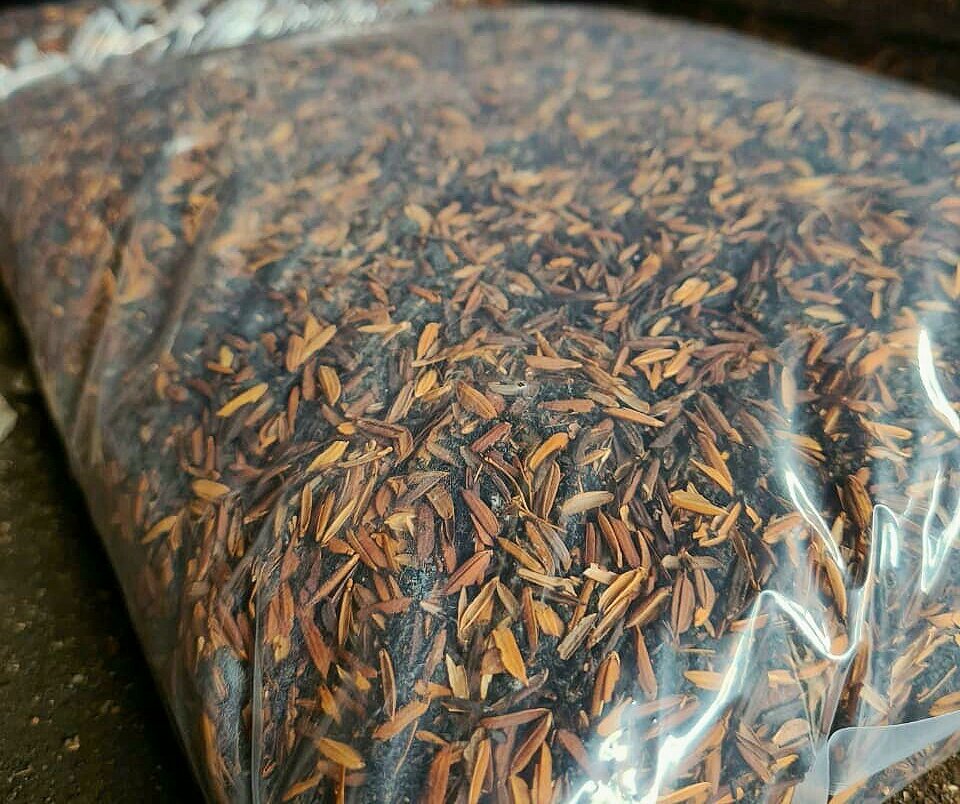
Roasted husks
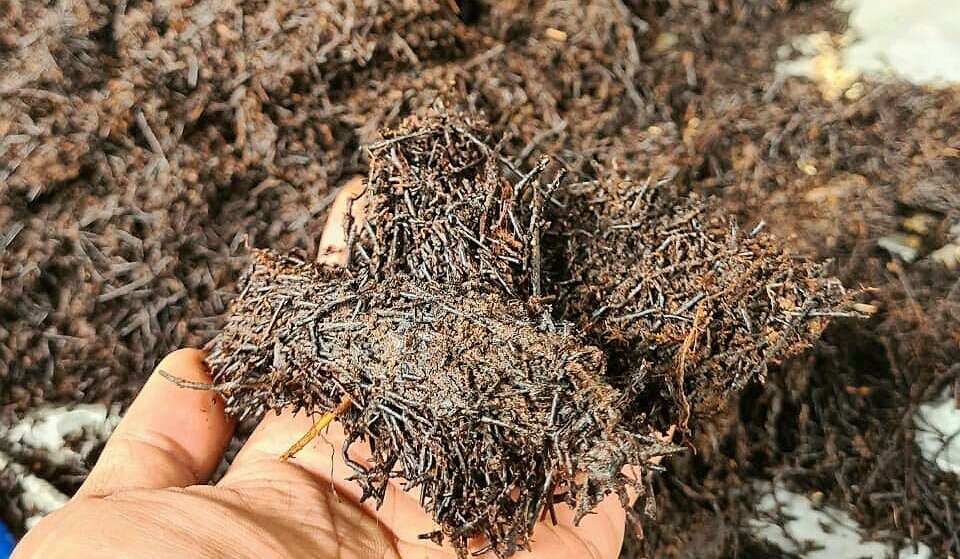
Coconut coir mix
The planting media used to plant aglaonema must be porous (not binding to water), clean, sterile, not too moist, and have good aeration and drainage. There are several types of planting media that you can use to plant aglaonema, including: ferns, cocopeat, roasted husks, sand and calliandra. This planting medium is not used singly, but mixed with one or more types of media.
Here are some compositions of aglaonema growing media that are often used by hobbyists:
- Ferns, sand and calliandra (3:2:1)
- Ferns, sand, roasted husks and cocopeat (2:1:1:1)
- Burnt husk, cocopeat and sand (2:1:1)
- Cocopeat, roasted husks, compost and sand (4:4:1:1)
- Cocopeat, roasted husks, manure and compost (4:3:1:3)
- Burnt husks, manure and sand (3:3:4)
There are many types, colors and shapes of pots that can be used to grow aglaonema. However, there are several things to consider when choosing a pot to plant aglaonema, such as the compatibility of the shape of the pot with the figure of the plant. The size of the aglaonema pot should be adjusted to the size of the aglaonema to be planted, the goal is that there is harmony in the shape and size between the pot and aglaonema.
The pot used must also have a good ability to dispose of flushing water (drainage) and good in air circulation (aeration). It's a good idea to use a pot that is made from soil because a pot like this fulfills these two requirements. If using a plastic pot, you should choose one with a large bottom hole. The color of the selected pot can be adjusted to the color of the aglaonema leaves, so it looks harmonious. I suggest that friends choose black pots, because black pots are neutral and suitable for planting with any color aglaonema
Fertilization
Fertilization aims to replace nutrients in the growing media that have been reduced due to being absorbed by plant roots or washed out by water. The main purpose of fertilization on aglaonema plants is to beautify the leaves. Therefore, I recommend using fertilizers that contain high nitrogen (N) elements. The type can be in the form of sterile organic fertilizer derived from sheep, horse, cow, and chicken manure.
You can also use inorganic fertilizers in the form of foliar fertilizers such as Vitabloom, Gandasil B, Hyponex, Kristatlon or Gaviota. Fertilization should be done 1-3 weeks. The use of organic fertilizers is done by spreading it to the planting media, while the use of inorganic fertilizers can be done by spraying onto the leaves. The dose used must be adjusted to the instructions for use listed on the packaging.
Sprinkling
Aglaonema is a plant whose water needs are strange. If there is not enough watering, the planting medium will dry up and aglaonema will grow languidly. But if too much watered, aglaonema easily attacked by root rot. Therefore, watering aglaonema must be done with full calculation. Watering is only done when the planting medium is completely dry. The amount of water should not be too much (pooled) because it can stimulate root and stem rot. The water provided is sufficient to moisten the plants only (the medium is slightly wet).Dry conditions or not the planting media can be known by immersing a finger into the planting medium. If the inside of the planting medium still feels wet, it means that aglaonema does not need to be watered because the water needs are still sufficient. In order to always look clean and fresh, aglaonema leaves can be watered with a spayer whose opening is set small so that the water that comes out is soft or not too hard.
Shading
The lighting factor is very important to support the appearance of aglaonema. Aglaonema plants will grow optimally if the intensity of incoming sunlight is not more than 50%. If more than that, aglaonema leaves will be dull, black, burnt, and even plants can die. The shade used in the form of paranet whose type is adjusted to the height of the planting location. If in low-lying areas, you should use a paranet that can filter sunlight up to 75%, so that only 25% of the incoming light. Meanwhile, in the middle plains and in the highlands, it is better to use a paranet that can filter 65-70% light so that only 30-35% of incoming light comes in.
Humidity Setting
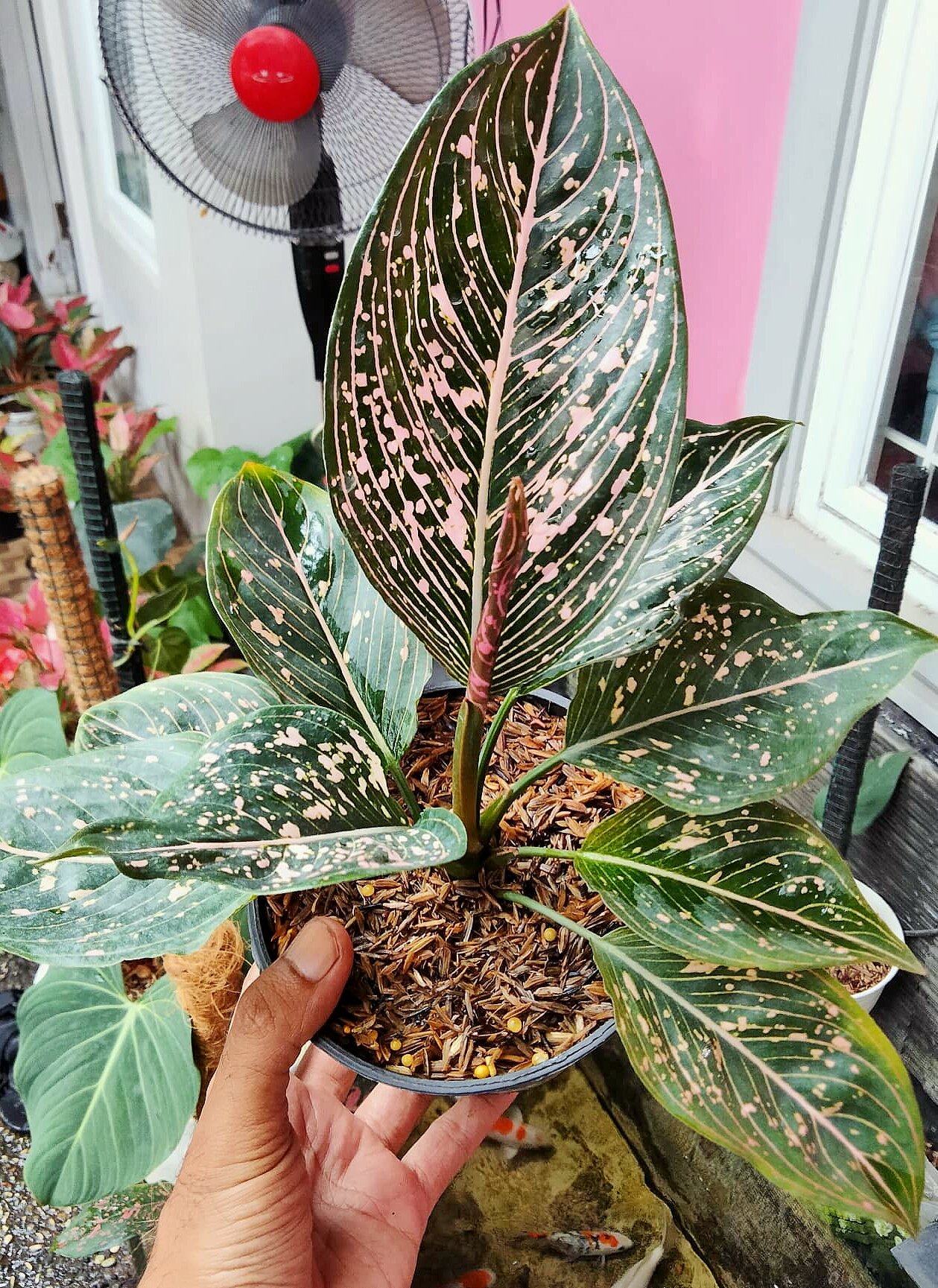
The desired air humidity of Aglaonema is in the range of 50-70%. In areas of medium or high altitude, this figure range will be reached if the temperature during the day reaches 24-27°C and at night it reaches 18-21°C. In lowland areas, the range of these numbers will be reached if the temperature during the day is 27-30°C and the temperature at night is 21-24°C. If the humidity is appropriate, then aglaonema will grow excellent, the leaves are compact, fresh and the colors are getting brighter.
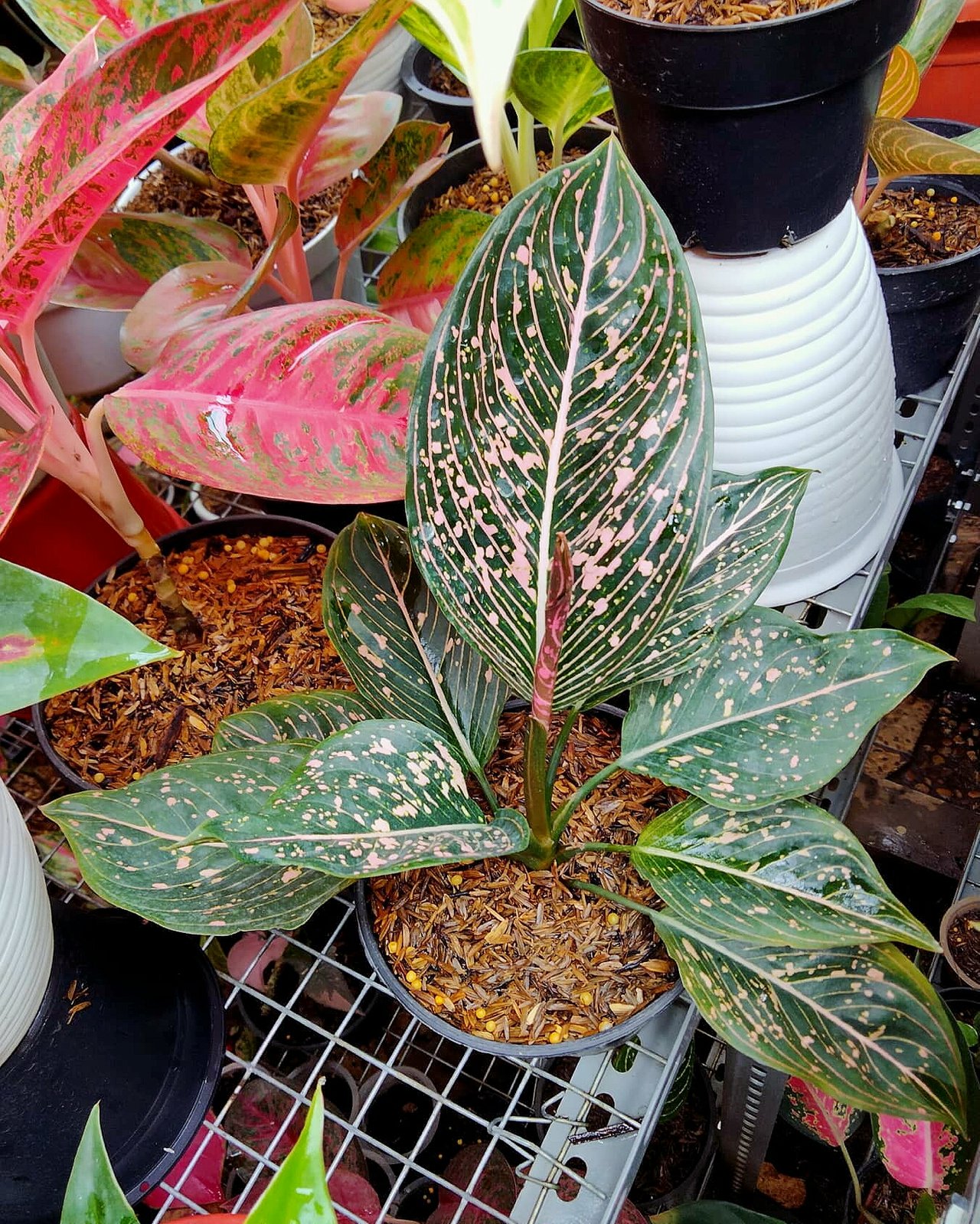
However, if the humidity is below the desired value, then Aglaonema can be attacked by stem rot and leaf blight. Fungi, bacteria and viruses will also be easy to attack. The solution, when the humidity is reduced, you can mist water to wet the entire leaf surface. Another way is not to put aglaonema pots close together, as much as possible install a blower fan around the planting location. This blower fan is turned on from 8 am to 4 pm. In addition to reducing humidity, the presence of a blower fan is also to improve air circulation at the planting site.
Repotting
Repotting is done on aglaonema that has grown so much that its roots appear on the surface of the planting medium. Another function of repotting is to restore the availability of nutrients that may have been reduced in the same planting medium. The following are the steps for repotting aglaonema:
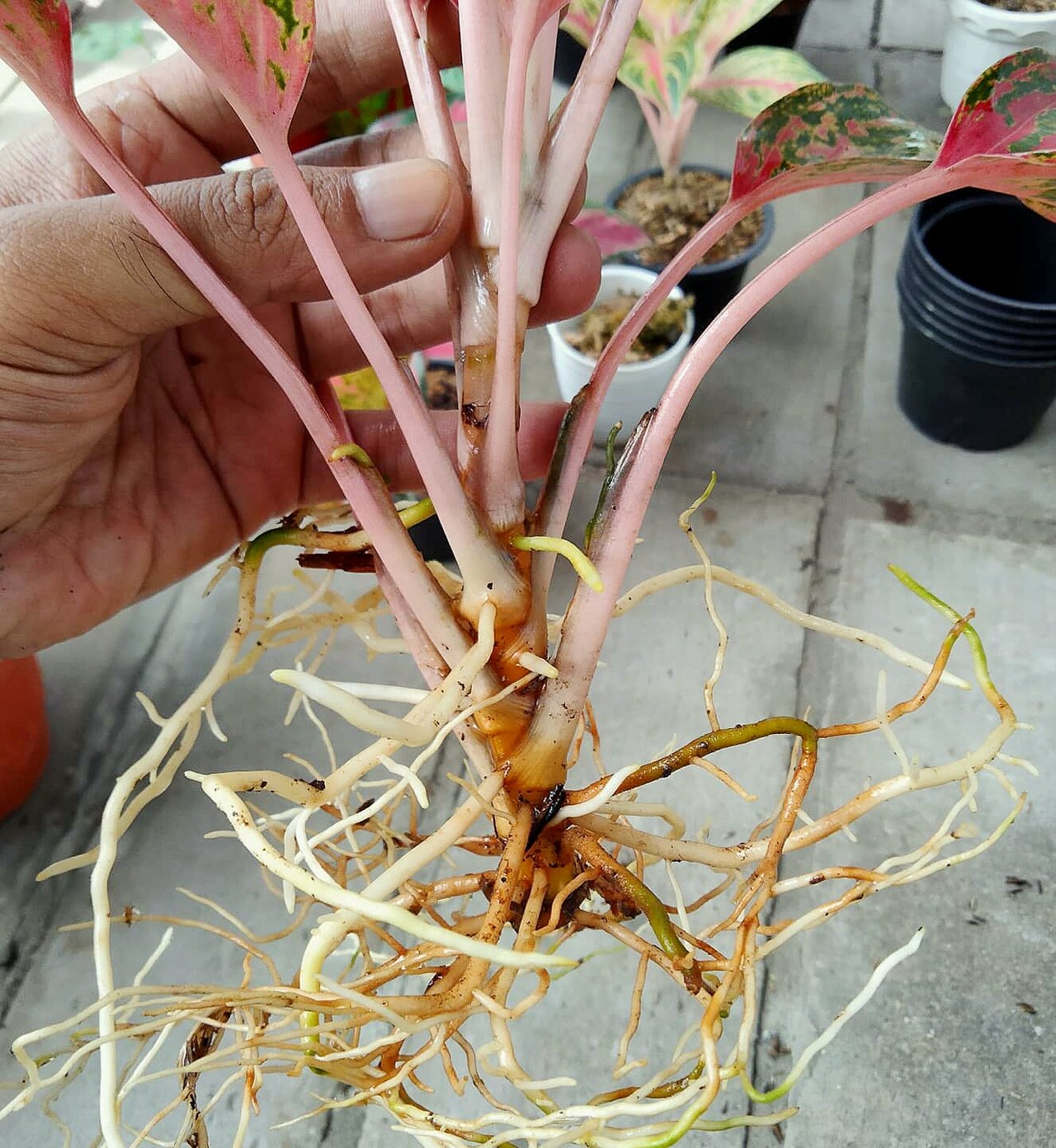
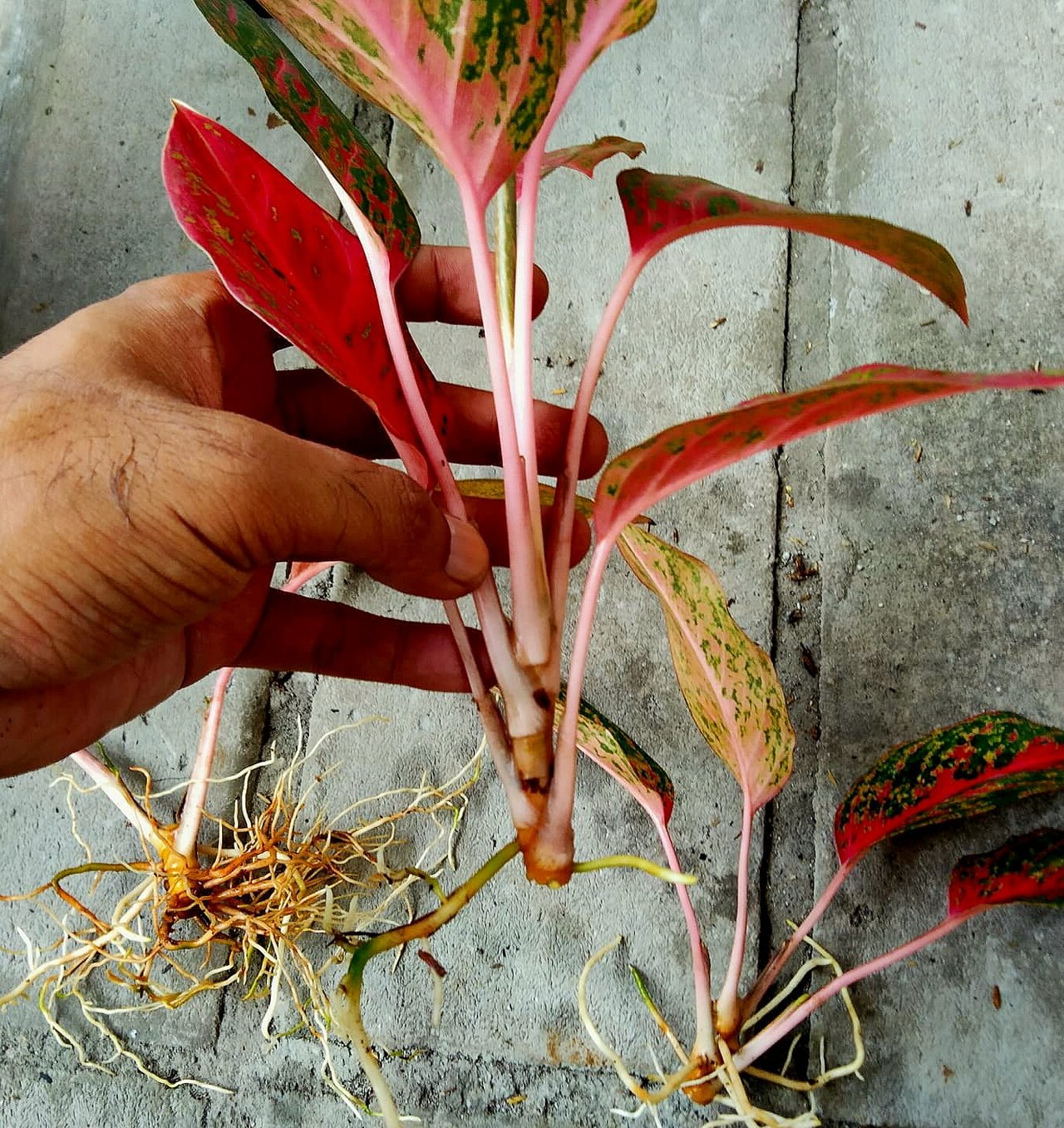
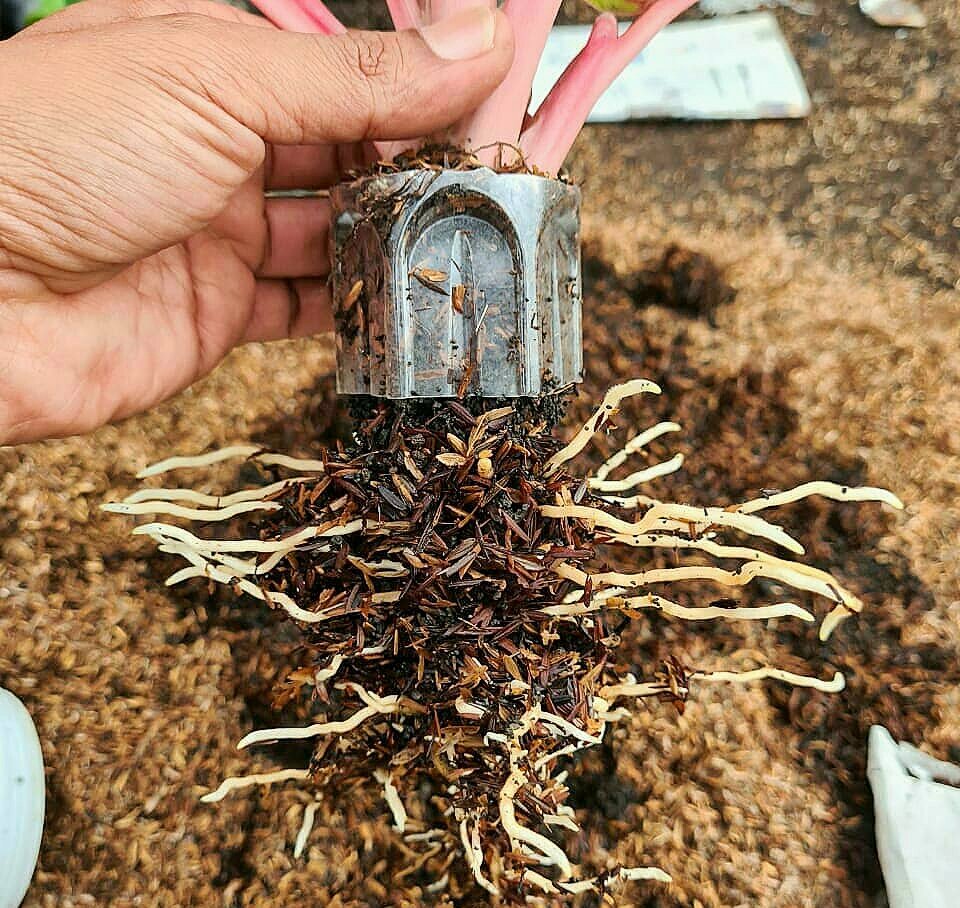
Prepare aglaonema that will be repotting, also prepare new planting media and new bigger pots.
Cover the bottom of the pot with crushed red brick or Styrofoam to a quarter of the height of the pot. After that, enter the planting medium to 2/3 the height of the pot.
Remove the aglaonema from the old pot. Do this carefully so that not many of the roots are damaged or cut off. To make it easier to remove, pinch the rootstock of aglaonema by hand, then turn the pot and pull out the aglaonema until it is released along with the planting medium. After removing, clean the planting media that is still attached.
Replant aglaonema into a new pot that has been filled with planting media. Planting position right in the middle of the planting medium. After that, add the planting medium to fill the entire surface of the pot.
Flush the planting medium with enough water, then place the pot in a shady place.
Maybe this is all I can share, hopefully it can be useful. I really look forward to voting support from @steemcurator01, @steemcurator02, @steemitblog, @booming01 and I will thank everyone who has supported my post.


